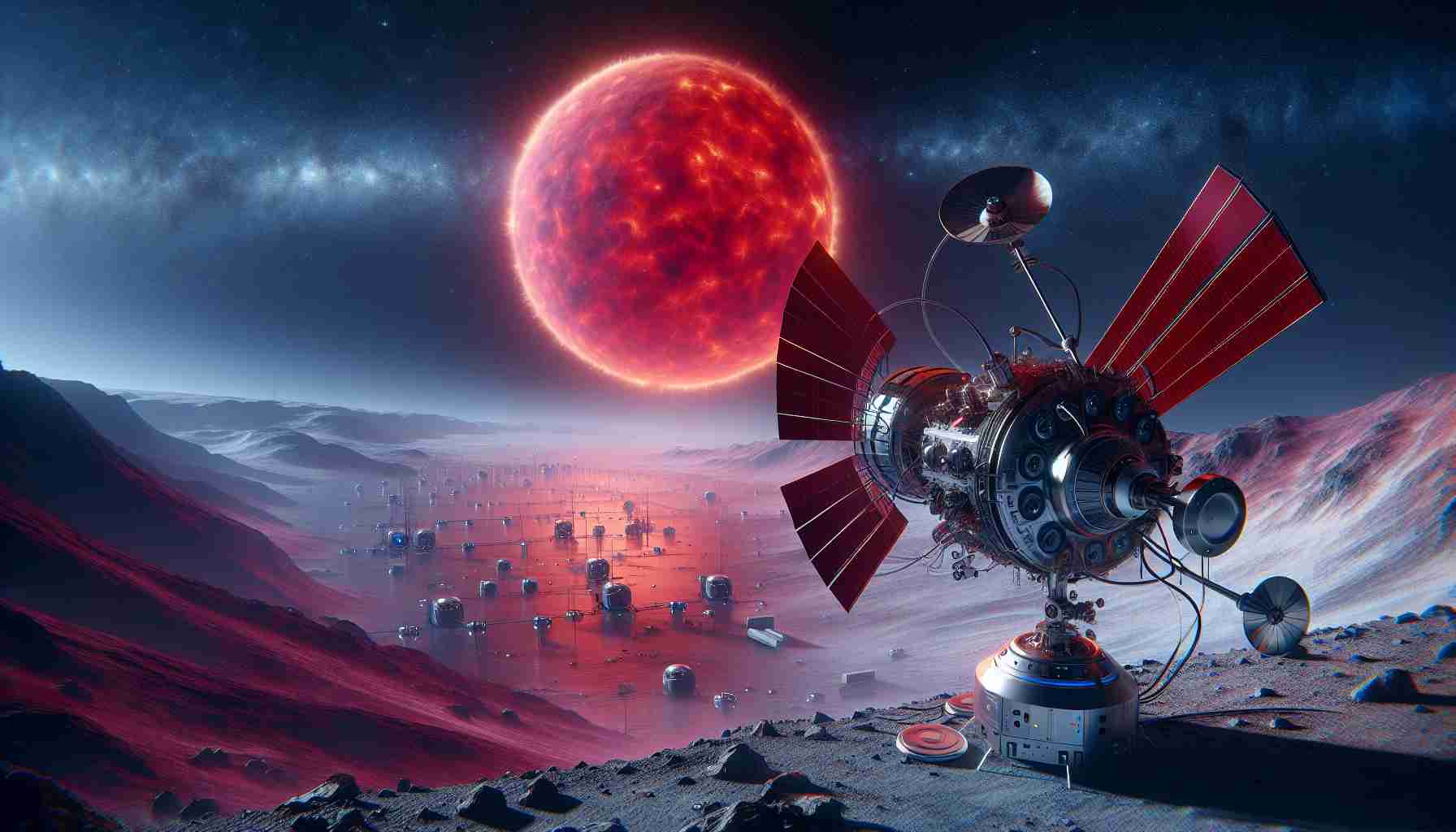- Red dwarfs constitute about 75% of nearby stars, making them significant for astrobiology.
- The SAKHMET project aims to enhance our understanding of M-dwarfs through a high-altitude balloon mission.
- Scheduled for 2029, the mission will launch from Antarctica and reach an altitude of 36 kilometers.
- SAKHMET intends to conduct a detailed spectroscopic survey of 300 stars to analyze 12 key elements.
- This research could improve insights into the habitability of planets orbiting red dwarfs.
- Detecting rocky planets around red dwarfs may reveal new opportunities for finding life-supporting environments.
In the vast expanse of our cosmos, faint red dwarfs dominate the stellar neighborhood, making up a staggering 75% of the stars nearby. These cooler, less massive stars tantalize astrobiologists with the promise of harboring Earth-like planets. But here’s the catch: understanding the chemical makeup of these mysterious M-dwarfs has been a monumental challenge.
Enter the innovative team led by astrophysicist Natalie Hinkel from Louisiana State University. They are on a quest to revolutionize our comprehension of these elusive stars through a groundbreaking mission named SAKHMET. This ambitious project, aiming for a NASA grant of $20 million, plans to launch a high-altitude balloon equipped with advanced instruments from Antarctica in 2029.
SAKHMET’s balloon will rise an impressive 36 kilometers above the ice, circumventing Earth’s atmospheric distortions and the usual day-night cycle that hampers optical telescopes. This remarkable setup will allow the team to capture a detailed spectroscopic survey of 300 stars, meticulously analyzing the abundance of 12 critical elements. The implications? A clearer understanding of the potential habitability of planets orbiting these M-dwarfs.
With a remarkable ability to detect rocky planets more easily due to their size, red dwarfs could unveil a hidden treasure trove of life-supporting worlds. By honing in on the elemental makeup of these stars, scientists can infer the conditions that might foster life in their surrounding systems.
As the countdown to their proposal deadline draws near, Hinkel and her team stand on the brink of discovery that might reshape our understanding of the universe and the possibilities of life beyond Earth. Exciting times are ahead in our exploration of the cosmos!
Unlocking the Secrets of Red Dwarfs: The Revolutionary SAKHMET Mission
Understanding Red Dwarfs and Stellar Composition
In the universe, red dwarfs comprise an overwhelming 75% of nearby stars, and they pose an enticing opportunity for the discovery of Earth-like exoplanets. However, these cooler M-dwarfs pose significant challenges for scientists trying to analyze their chemical compositions due to their faintness and the atmospheric interference faced by telescopes on Earth.
The SAKHMET Mission
Astrophysicist Natalie Hinkel and her team from Louisiana State University are spearheading a revolutionary project named SAKHMET. This mission is set to launch a high-altitude balloon from Antarctica in 2029, aiming for a NASA grant of $20 million. The balloon will ascend approximately 36 kilometers above the surface, providing a unique vantage point to conduct a detailed spectroscopic survey of 300 red dwarf stars. The data collected will focus on the abundances of 12 key chemical elements which are crucial for assessing the habitability of surrounding exoplanets.
What Makes This Mission Unique?
Unlike traditional telescopes, which often struggle to analyze faint stars due to atmospheric disturbances and light interference during day and night transitions, SAKHMET will avoid these pitfalls by operating above most of the atmosphere. This high-altitude setup not only enhances spectral resolution but also allows for continuous observation without interruptions.
Key Insights and Trends
1. Market Forecasts in Astronomy: The launch of innovative missions like SAKHMET signals a growing investment in space research, with budget allocations for astrobiology and exoplanet studies expected to increase as the search for life beyond Earth intensifies.
2. Technological Innovations: The advancements in balloon technology and spectroscopic methods are paving the way for new methodologies in stellar and planetary studies, which could lead to discoveries of potentially habitable exoplanets around M-dwarfs.
3. Sustainability in Space Missions: As space exploration continues, there is a rising emphasis on sustainable practices, especially in terms of launch logistics and minimizing space debris.
Frequently Asked Questions
1. What elements will SAKHMET analyze in red dwarfs?
SAKHMET plans to analyze 12 critical elements, which may include hydrogen, helium, carbon, oxygen, and metals such as iron and magnesium. These elements play a fundamental role in understanding the potential habitability of planets orbiting these stars.
2. Why are red dwarfs important for the search for extraterrestrial life?
Red dwarfs are abundant and stable over long periods, which greatly increases the chances of life developing on orbiting planets. Their proximity to Earth makes them prime candidates for intensive study in the search for Earth-like conditions elsewhere in the universe.
3. How will SAKHMET impact future astronomical research?
By utilizing high-altitude observation techniques, SAKHMET is expected to revolutionize the way astronomers gather spectral data, potentially leading to unprecedented discoveries regarding the elemental compositions of stars and their planetary systems. This mission could set the stage for subsequent explorations and enhance our understanding of the cosmos.
For more insights into space exploration and astrobiology, visit NASA.













